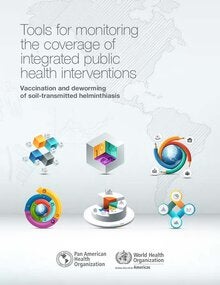To improve the well-being of the population and bridge gaps in health service delivery, it is necessary to guarantee access to various health interventions, including proven strategies such as vaccination and deworming.1 Meeting program coverage goals, however, depends on identifying and reaching target populations. This means, in turn, promoting universal access to health using integrated approaches and a more efficient use of resources. What’s more, health services must adopt monitoring and systematic analysis of coverage as indispensable activities. Immunization programs in the Americas have extensive experience with the methodologies and tools for monitoring vaccination coverage. Countries have adopted and improved these instruments, adapting them to a range of target populations and epidemiological contexts. Moreover, the accumulative experience gained in the area of vaccine-preventable diseases (VPDs) may be applied to other programs, like deworming, which uses very effective interventions to reduce the burden of disease caused by soil-transmitted helminths. Registries that generate data on administrative coverage are very useful for helping to control, monitor, and evaluate program evaluation. But the quality of numerators and denominators can affect the quality of coverage data. It is thus important to analyze and interpret administrative coverage indicators correctly, supplementing them with other field methodologies that health teams can use to monitor and evaluate health interventions. The Pan American Health Organization’s (PAHO) Comprehensive Family Immunization Unit and Regional Program on Neglected Infectious Diseases (NIDs) have highlighted the need to systematize and integrate methods for monitoring coverage of health interventions among preschool- and school-age populations and are offering strategies and opportunities for joint collaboration.
|

